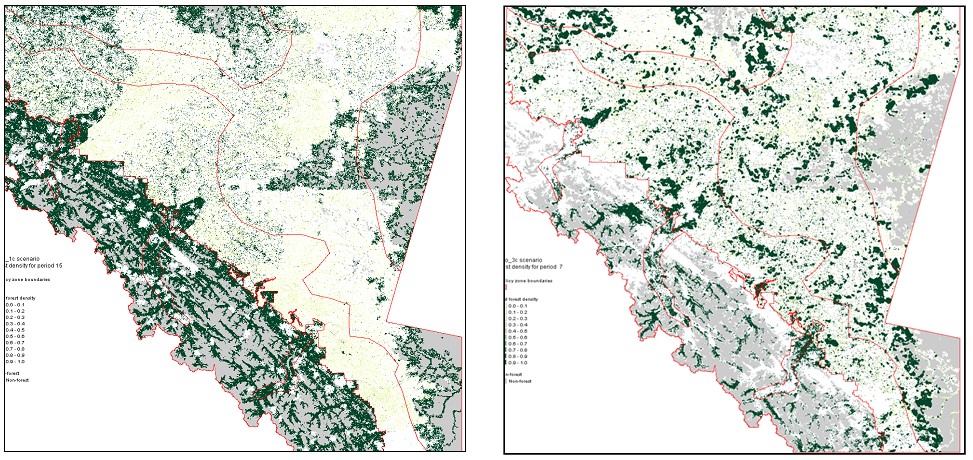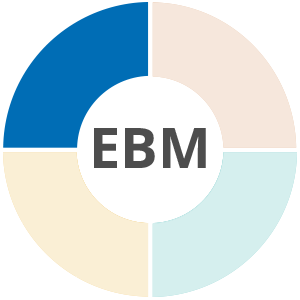Overview
EBM is easier to achieve if its basic ideas are considered at the early stages of landuse planning. The Upper Athabasca Pilot was a demonstration of what could be achieved by applying EBM principles to a very large landscape planning exercise—achieving multi-sector resource objectives while maintaining an ecosystem pattern that emulated natural disturbances.

Photo credit: fRI Research
Background
Fundamental to implementing EBM is to consider strategic, big picture themes such as master plans and engaging partners that can turn a vision into a reality. Alberta has acknowledged this need with the Land Use Planning (LUP) consultations that sought to create large scale targets and processes for resource use.
This project supported provincial efforts by exploring and testing, through stakeholder involvement and modeling, the idea of using natural patterns as the foundation for land use planning. The study area for the HL approach pilot study encompasses parts of three land use zones; The Upper Athabasca, the Upper Peace, and the North Saskatchewan (11 million ha).

Image credit: David Andison
Innovation
The primary assumption of the Healthy Landscapes approach is that the survival and health of the ecosystem is the ultimate goal of management activities. That this is the first consideration in planning, and that all other elements should flow from this is the innovation.
The project addressed the hard questions: To what degree will LUP compromise access to existing economic values? How does planning across jurisdictional boundaries occur? Does the approach create any significant changes in the flow of one or more critical values? Does this approach require a significant overhaul of existing policies and management systems (such as tenure)? How do regulators become management partners?
Discovery
As a proof-of-concept, this project made some simplifying assumptions. For example, no public consultation was possible, detailed baseline data and local knowledge were not available, and the analytical team was limited to three people. Proof-of-concept tests are invaluable tools for developing techniques and exploring the implications of radically new processes in a relatively safe environment.
This project demonstrated two possible roles for a Healthy Landscapes approach for land use planning; either as a supplement to landuse planning or as a replacement for it. The latter option is simpler to implement and less disruptive to current policies and practices. Moreover, developing a separate Healthy Landscape plan in support of the existing land use planning process provides more flexibility as regards how the output is used. For this project, we assumed the latter configuration. More specifically, we proposed that an HL plan sits at the bottom end of the more comprehensive regional land use plans, and at the top end of individual strategic plans.
Where in the wheel?
Modeling for forests with EBM approaches will require the ability to project how cultural forest disturbances combine with natural landscape dynamics to affect key values. Scenario planning models are designed to explore and identify an optimal disturbance “solution” based on a range of input criteria. Traditionally, policy options are based on the perceived needs of individual values and use the flow of key primary values (e.g., timber) as critical measures.
We sought to use indicators of landscape condition as the reference point based on the Natural Range of Variation. The “optimization” in this case was the improvement in the alignment of future landscape conditions with NRV. This required knowledge of both the current landscape condition, and NRV, key EBM elements in boreal forest planning.
This demonstration, although begun years ago, is being given a new life by Healthy Landscape partners. Recognizing the value of showing what a Full EBM plan might look like, a continuation of this original project is being planned. When complete, the final report will show that EBM outcomes are achievable and realistic.



